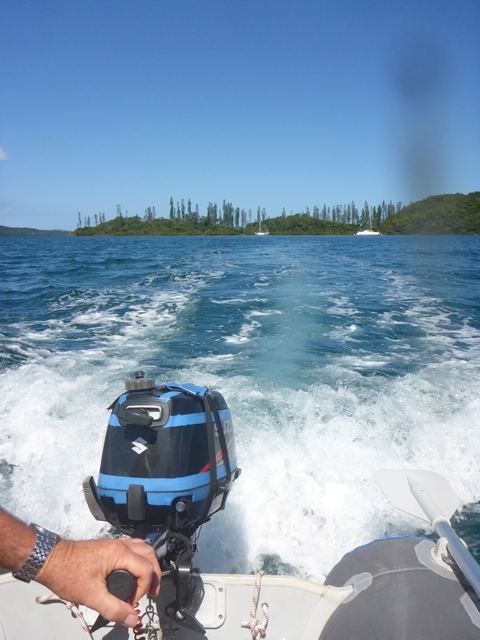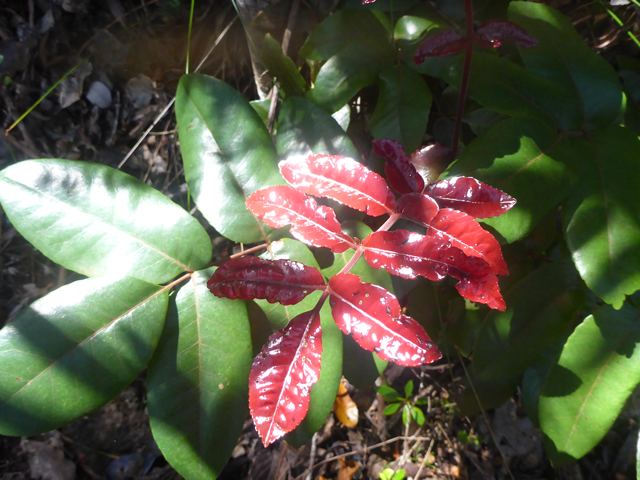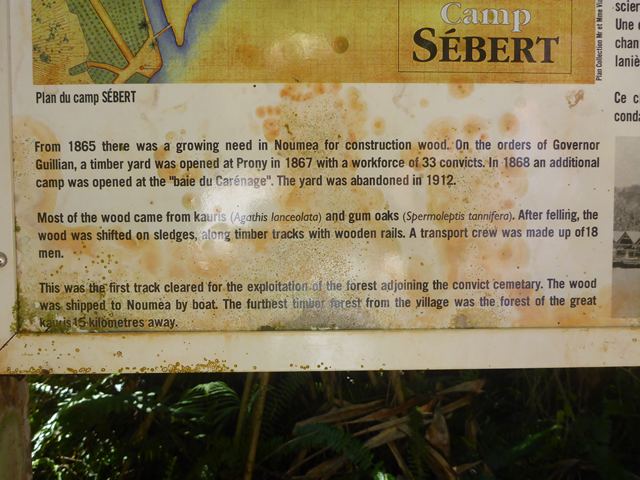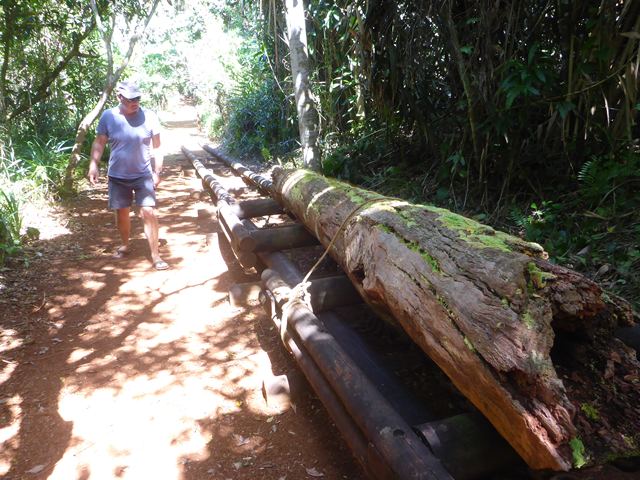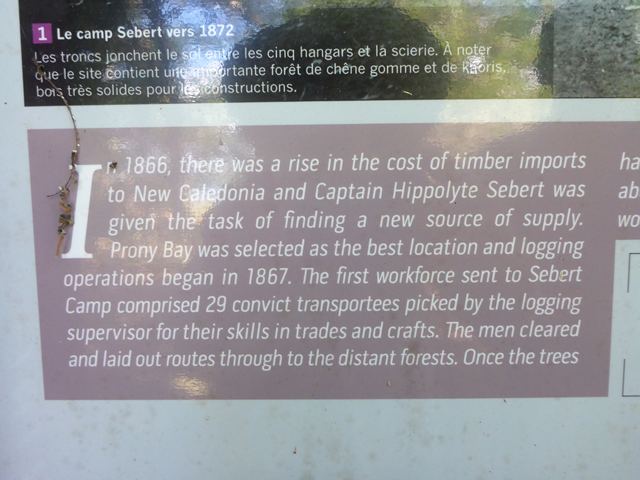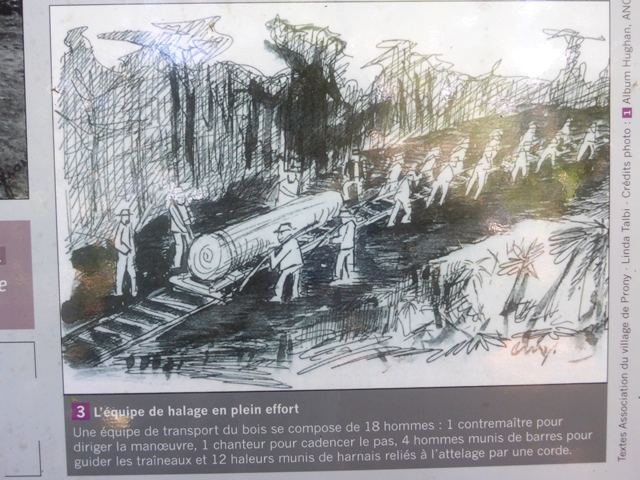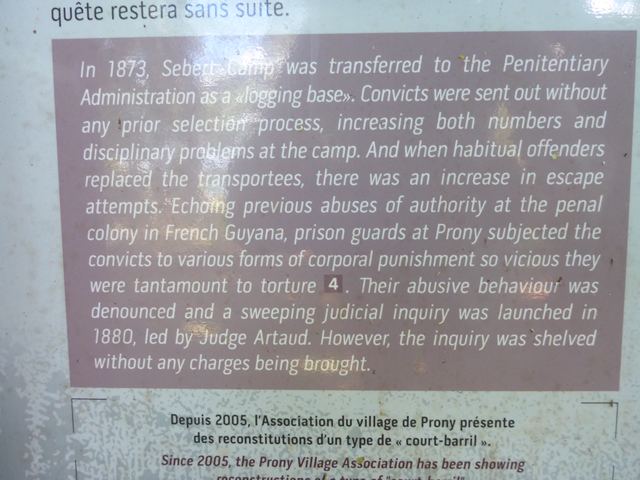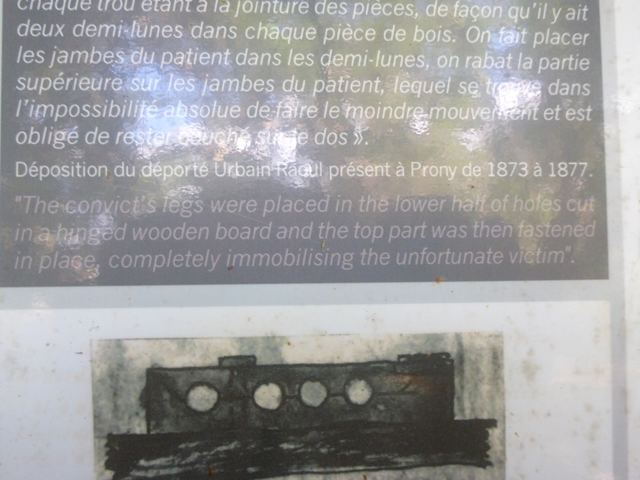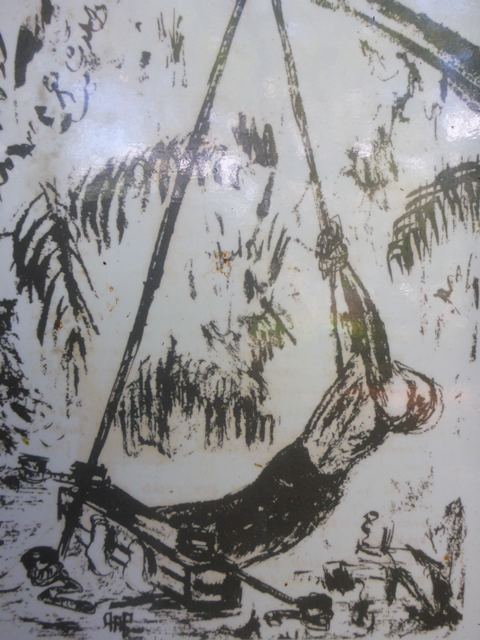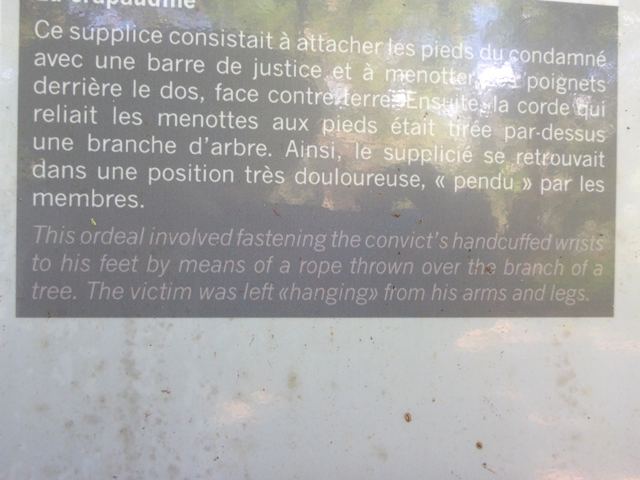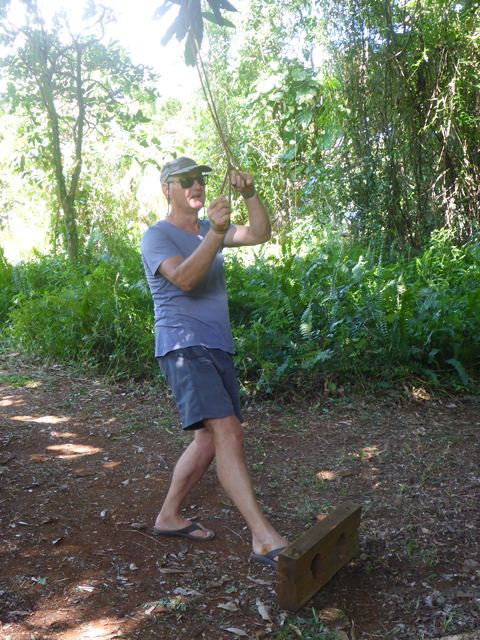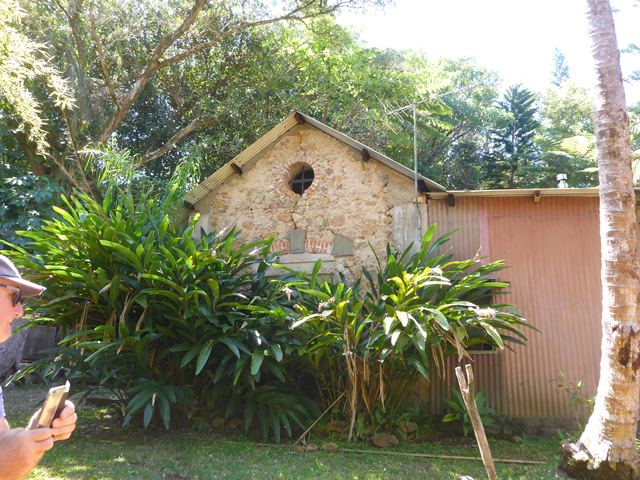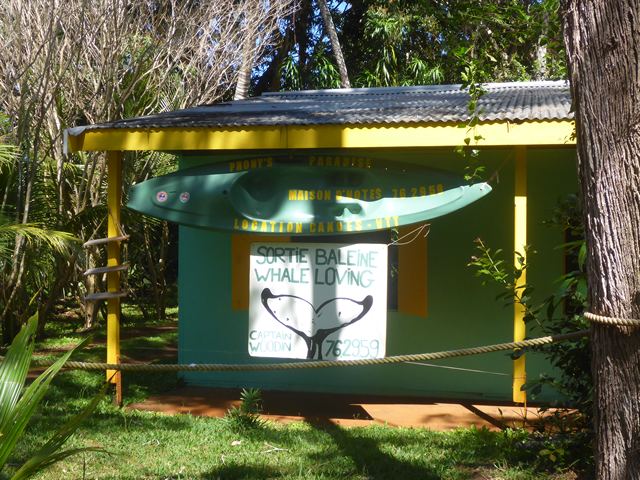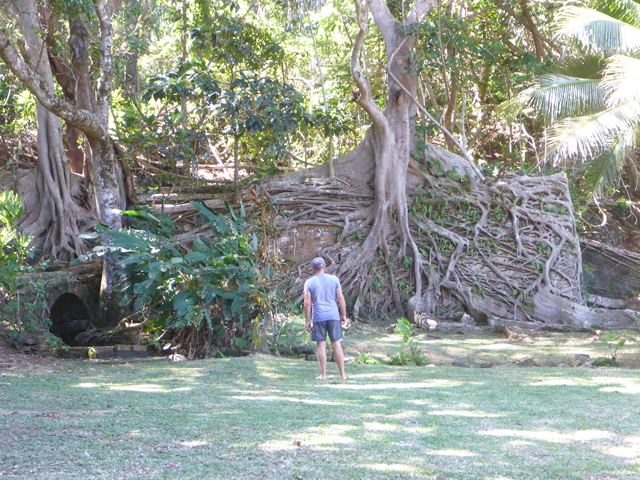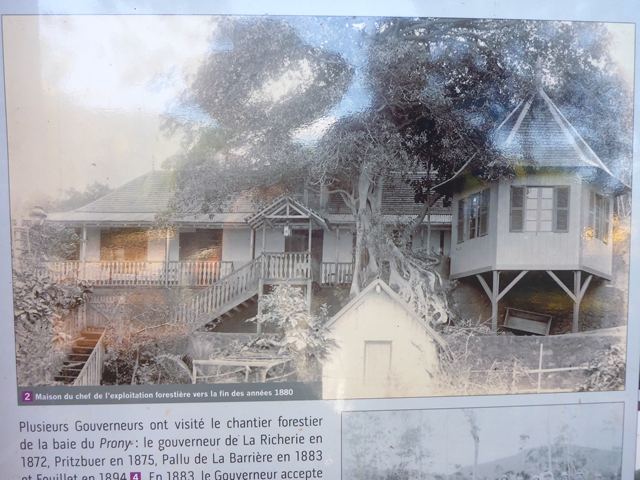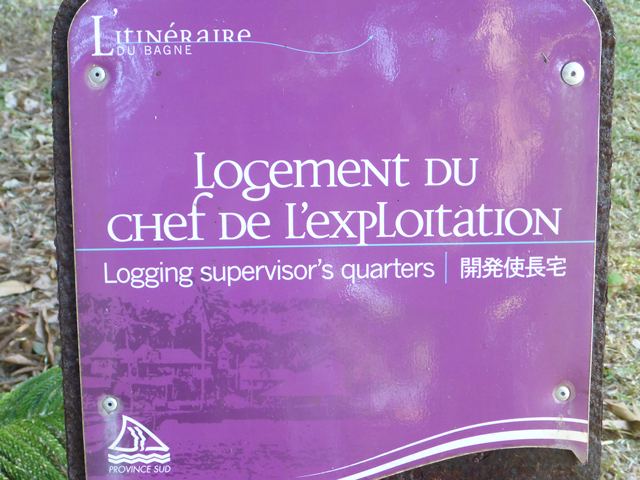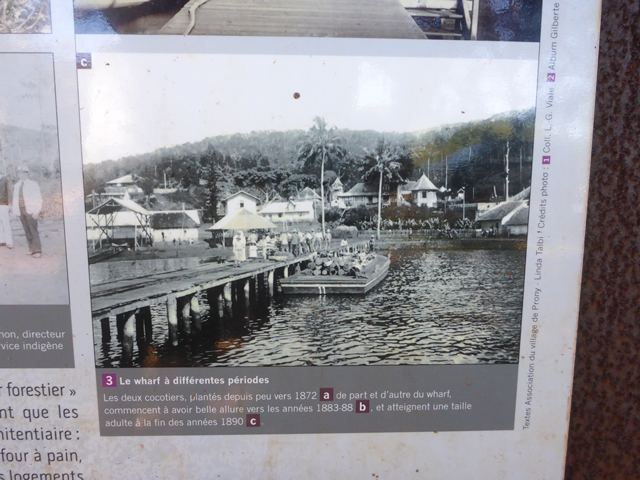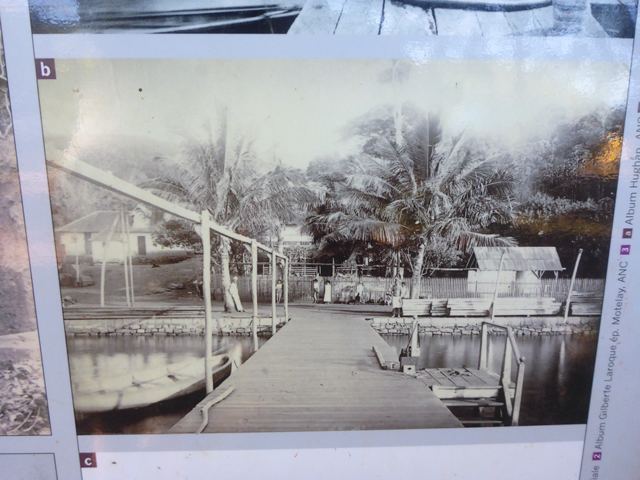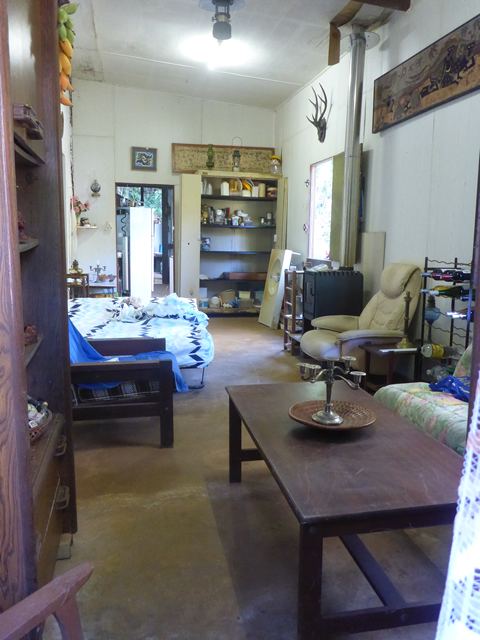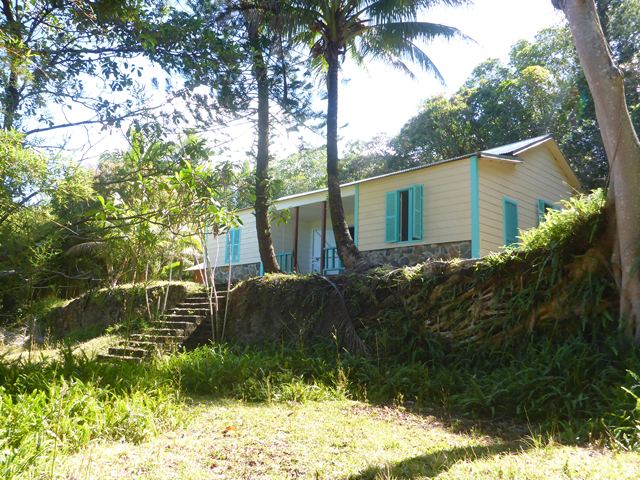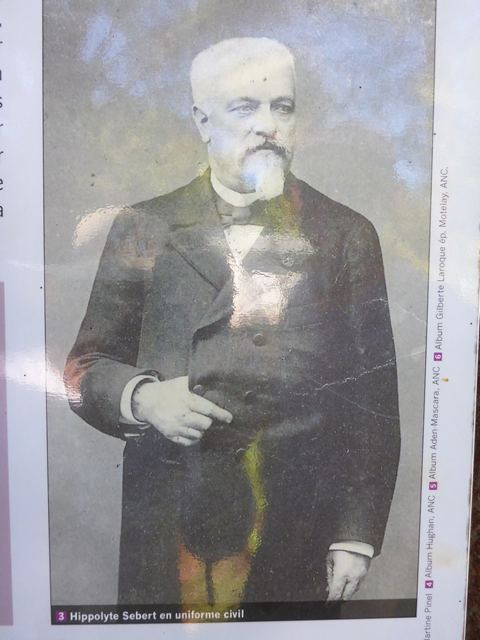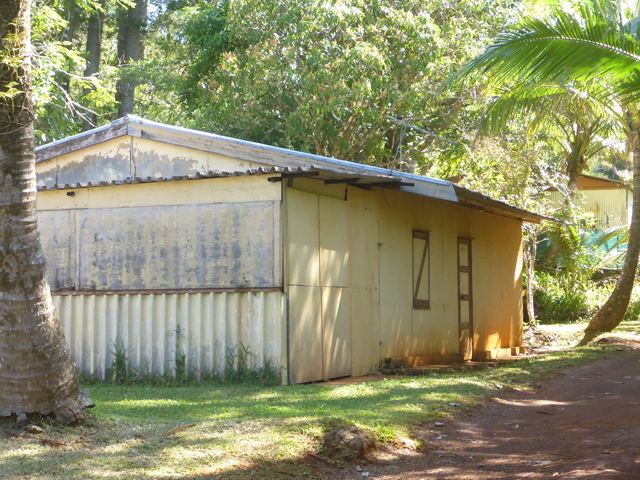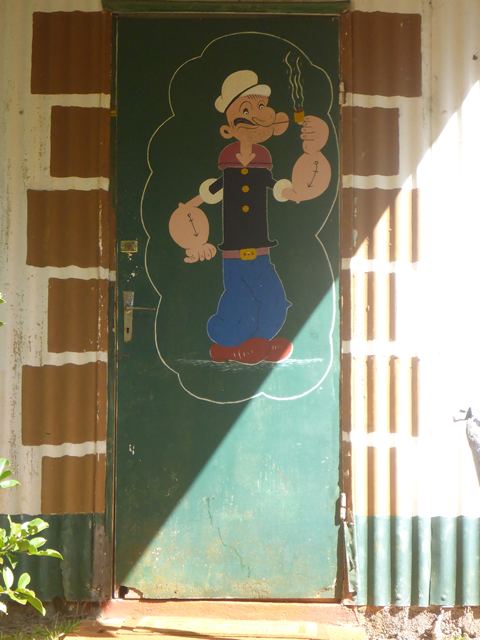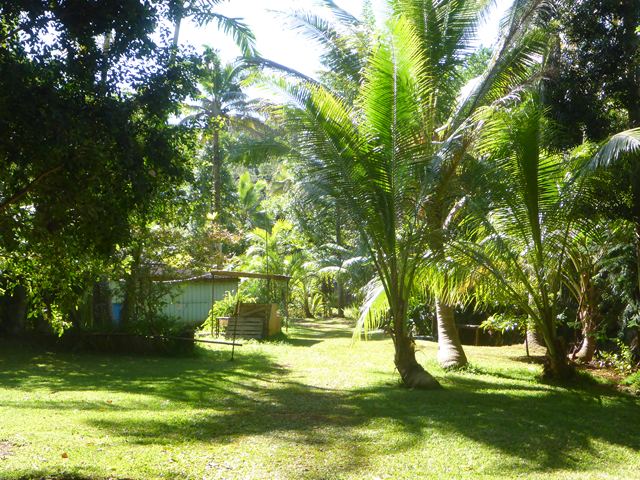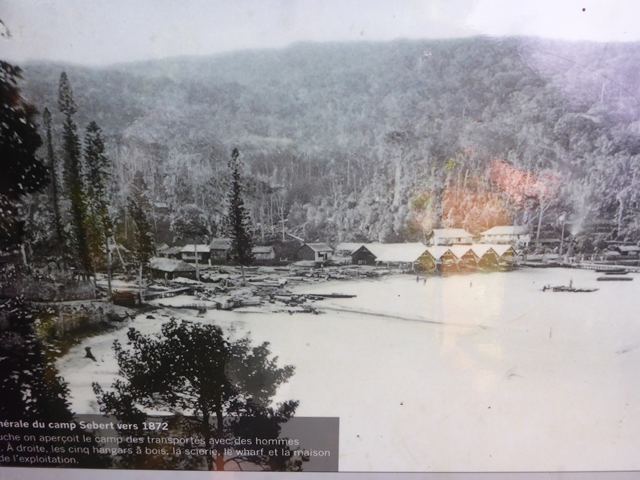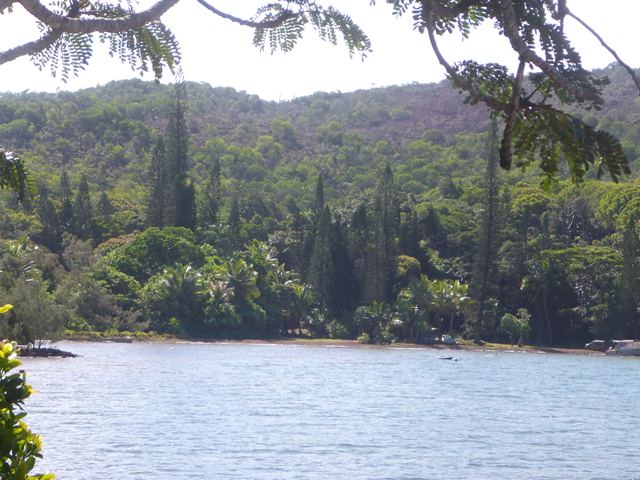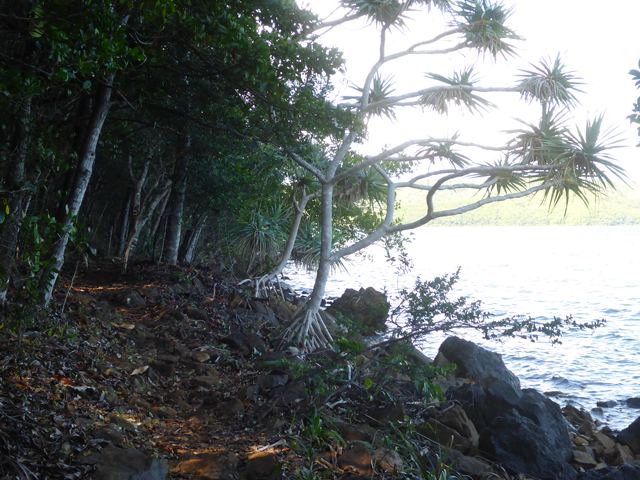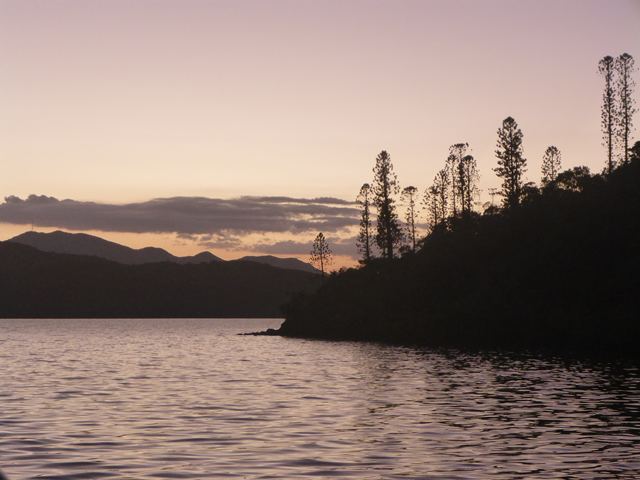A Convicts Life was not a Happy One

|
A Convict’s Life was not a Happy One Prony Village Penal Colony The first prisoners to arrive at the colony were hand-picked by the logging supervisor for their skills in masonry, building and carpentry and they came firstly as transportees and latterly from the penal colony in French Guiana on the north east coast of South America where there was a history of abuse of authority. What little remains of their work, their wall building, is a historic testimony to their skills. The process of a penal colony was meant to a) reform the prisoners who b) provided a free labour supply for the growing colony in the process of colonialism. When growth of nearby Noumea became rapid the demand for the wood the prisoners were lugging from the forests to the jetty to be used for house building also increased, so many more prisoners, amongst them repeat offenders arrived who were not so skilled and disciplined, providing a fertile basis for the brutality of the more psychopathic officers. Rob is facing the wrong way in the photo, as the diagram illustrates the prisoners would be facing away from the rope that tied their hands behind their back and hauled them just off the ground, so their shoulders would be taking their strain and their tied hands aching and hurting after being crushed in the press. In 1880 a judicial inquiry was launched in to what was perceived at the time as abusive behaviour, but unsurprisingly no charges were brought and it was eventually shelved. Considerable pressure has to be brought to bear by public disquiet, organised protest and individuals within government and the judicial system to bring about an inquiry, so it is a measure of the divided opinion at that time on how to treat prisoners that is most revealing. Also, on the more humane side of prisoner care, at the end of the camps life as a penal colony some of the men were given land on which they could have made a subsistence living had they chosen or been able to, but few remained in the area, seeking perhaps human society after their time in the wilderness. We had walked over the small hill through the woods and part of which contained the prisoners’ cemetery, which touched briefly on the original logging track. The cemetery was overgrown and there were no signs of headstones or the like. Countless anonymous men lay in the ground with just the occasional line of stones to mark their passing. We were in fact arriving at the camp from the prisoners’ side and judging by the lack of ruined buildings they lived in temporary shelters that have not stood the test of time. One of our pilot books in 1989 describes the camp as overgrown but the main area has been cleared and carefully maintained with devotion to the effect it is a pretty area of shade and diffused sunlight and is far from being deserted. The sounds of machines, a generator and voices filled the air along with the ever present bird song. A man in a modern wooden hut with an open dining area welcomed us and said we were free to roam. He was just clearing up as if a meal had been prepared and eaten and the diners returned to their tasks. We came to the stream that divides the prisoners’ side from the officers’ area and once provided the camp with fresh drinking water. The first long building was one of the first built to store supplies and then there were the lodgings for the accountants and the prison guards. The generator whirred away in the one being cradled by the giant banyan and the prison guards house was now lived in and a man was welding some metal with sparks flying around his industry. There was a well-defined track infront of them leading away from the main path and I strolled along it. On the left a bamboo grove thrived and on the right the land rose to another level plateau, once a building of some sort would have sat there. At the top of the path a beautiful new wooden bungalow with open windows and doors. Were these somebody’s second homes I wondered? It was built on levelled ground fronted with an original stone wall dating back 150 years to the start of the camp development. Curiosity was killing this cat but there was no-one around to ask. The old powder magazine up the stone flight of steps was restored by the Association for the village’s preservation back in 1991-4 but nothing was left except a level area, an indentation in the ground which could have been the crypt and a tiny wooden chapel on wooden legs full with posies mark where the chapel once stood, at the far end of the camp from the prisoners. The whale captain’s base was on the shore side of the main track; again all windows were open and it was obviously still in use despite the season of whale monitoring from July to mid-September being nearly at an end. When I attach the photos I will put the ‘then’ photos of the logging supervisor’s house and the view of the camp in 1872 next to the photos I took of the same to give you contrast, but whether the mailasail site will keep them in that order or revert back to number order we shall see. The supervisors house must have been an amazing place to live, originally build behind the banyan tree, anyone could see even then which would win, the tree or the house! But what about the women, the wives and children of the officers, supervisor, governor, cooks etc, do any journals or diaries of their lives still exist in an attic or museum I wonder? Maybe a museum in Noumea will reveal something. A detour on our way back through the village showed us the iron miners’ family homes built from 1956 to 1968 and many of them are fully maintained and numbered. I suspect the Association lets them out to visitors, tourists and locals, professionals and volunteers for the village’s present role as a base for hikers stretching their legs towards the Bleue River Reserve to name but one destination, history research, archaeology digs, whale surveying, water sports activities and so on. The series of old wide jetties, one you can see infront of the supervisor’s banyan house are all gone now of course. There are just a few small mooring buoys for local boats and an empty bay of peace and quiet that would once have reverberated and echoed to the sound of wood saws and the rumbling of convict pulled log sleds called schlittes, men shouting commands and the ships horns of arriving loggers. A lone turtle was feeding in the shallow water of the bay as we walked along the beach and found our way back to the tender around the pretty headland. A look back and click of the camera shows a beautiful place with a new lease of life and different values given to the sanctity of nature and humanity.
|
